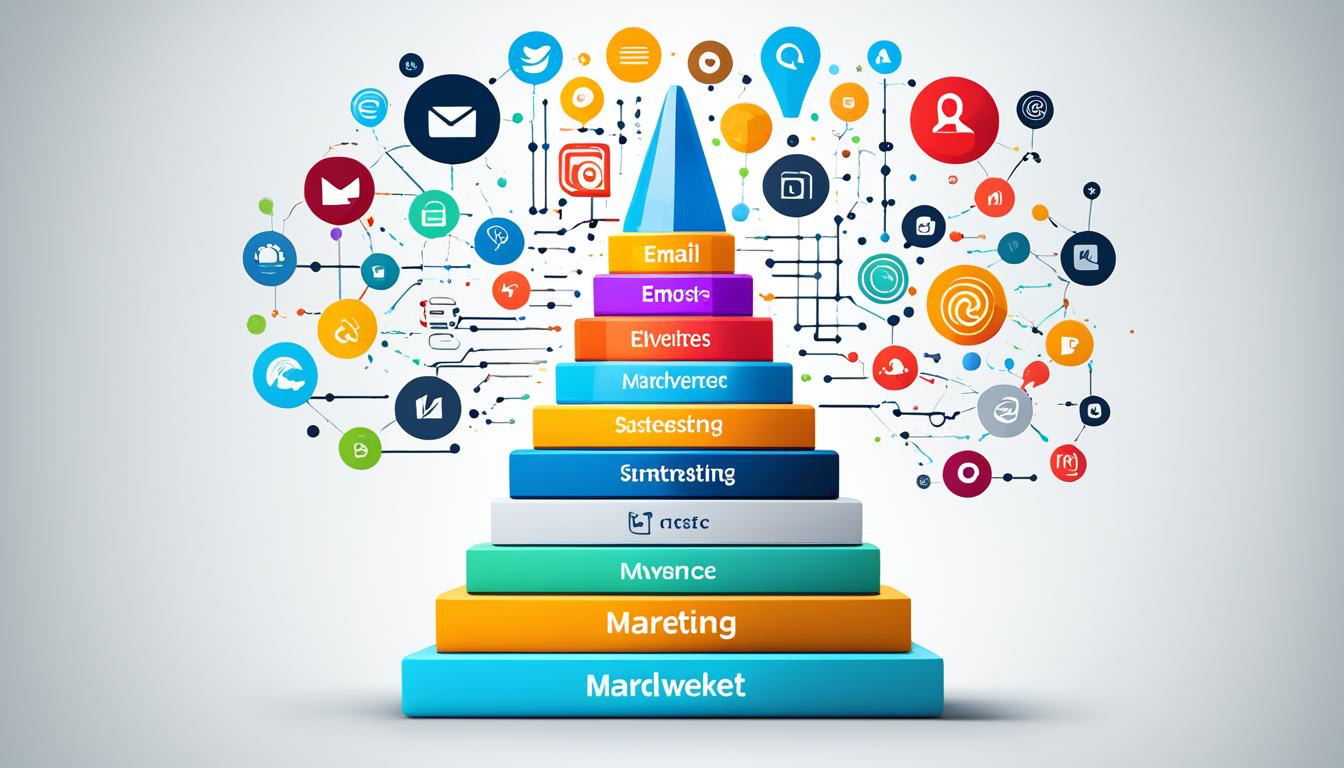Ensuring your emails reach people is key in email marketing. But sometimes, problems can stop your emails from getting through. A soft bounce is one of these problems. It means the email got to the recipient’s email server but didn’t make it to the inbox. A soft bounce is different from a hard bounce, which means the email will never deliver. Luckily, soft bounces are usually fixable.
Several things can cause a soft bounce. For instance, the recipient’s inbox might be full, or the email is too big. Sometimes, the problem is with the recipient’s email server or their spam filters. It’s important to fix these problems quickly. Doing so helps your emails get delivered more reliably, making your email campaigns work better.
This article will help you understand more about soft bounces in email marketing. We’ll look at ways to lower their number. Plus, we’ll explain why it’s important to keep an eye on your bounce rates. Finally, we’ll discuss how soft bounces are different from hard bounces.
Key Takeaways:
- A soft bounce in email marketing refers to an email that bounces back undelivered before reaching the recipient’s inbox.
- Unlike a hard bounce, a soft bounce is temporary and can be resolved.
- Common causes of soft bounces include a full recipient’s inbox, large email file size, server downtime, or issues with spam filters.
- To reduce soft bounces, implement double opt-in, avoid spam triggers, send engaging content, and manage sender reputation.
- Monitoring bounce rates is crucial for maintaining effective email marketing strategies and ensuring messages reach the intended recipients.
Understanding Soft Bounces in Email Marketing
In email marketing, soft bounces mean an email got to the server but not the inbox. It’s not like a hard bounce, which is a final no-go. Soft bounces can be fixed. They can happen for many reasons like a full inbox, too big emails, server issues, or spam flags.
For example, if an inbox is full, there’s no room for new emails. That stops delivery. Emails too big for the limit also cause soft bounces. Problems with the server or spam filters can stop emails from reaching the inbox, too.
Email programs often try again for 72 hours to deliver the email. But both soft and hard bounces need quick attention for good email deliverability.
| Causes of Soft Bounces | Definition | Temporary Deliverability Issue |
|---|---|---|
| Full inbox | An email is not delivered because the recipient’s inbox is at capacity. | Yes |
| Large email file size | An email exceeds the recipient’s inbox size limit, resulting in non-delivery. | Yes |
| Server downtime | Temporary issues with the recipient’s email server prevent successful delivery. | Yes |
| Triggering spam filters | Email content or sender practices trigger the recipient’s spam filters, causing the email to be marked as spam and not delivered. | Yes |
Reducing Soft Bounces in Email Marketing
To boost your email campaign’s success, it’s vital to cut down on soft bounces. You can do this by following certain best practices. This will help your emails get to the people you’re targeting.
Implementing a Double Opt-In Process
One strategy to lower soft bounces is using a double opt-in. This means you send a confirmation email. Subscribers must click a link to verify their email address. This step makes sure only real email addresses are on your list.
Avoiding Spam Triggers in Email Design and Content
It’s also key to steer clear of spam triggers in your emails. Advanced spam filters can block your emails if they detect these triggers. Stick to email marketing guidelines to avoid these pitfalls and reach your audience.
Sending Engaging and Valuable Content
Sending content that matters to your subscribers is crucial. If they find value in your emails, they’ll likely open and engage with them. This engagement means fewer emails will be marked as spam, reducing soft bounces.
Managing Sender Reputation
Your sender reputation is crucial for email delivery. ISPs look at your reputation to decide if your emails are trustworthy. Following email best practices and maintaining a good reputation helps you avoid soft bounces.
By employing these strategies, you can effectively minimize soft bounces. Using a double opt-in, avoiding spam triggers, offering valuable content, and having a good sender reputation are all important. They help ensure your email marketing campaigns perform well.
Importance of Monitoring Soft Bounces
Keeping an eye on soft bounces is key to email marketing success. If too many emails bounce, it can hurt how well your campaigns perform. It’s important to manage these rates to make sure your emails get to the people you’re sending them to.
The Impact on Email Deliverability
A lot of bounces can make it hard for your emails to get through. ISPs and email servers might think you’re not keeping a clean list or are a spammer. This could mean your emails end up in the spam folder, or worse, get blocked. This hurts how many people engage with your emails.
Enhancing Email Campaign Effectiveness
Watching soft bounces helps you fix problems that stop your emails from getting delivered. By looking at the reasons emails bounce, you can tweak your campaigns. This means better emails, more people opening them, and more clicks. And that leads to better results from your campaigns.
Effective Bounce Rate Management
Managing bounce rates is crucial for a healthy email list and strong email marketing. By using tools to track bounces, you can see patterns and catch issues early. This helps you keep your email list clean and effective.
Checking bounces often keeps your list full of interested subscribers. It also helps you find and remove emails that permanently fail. This improves how well your emails are delivered, keeps your sender reputation good, and makes your campaigns more effective.
| Bounce Rate Management Tips | Benefits |
|---|---|
| Regularly monitor bounce rates | Identify and address delivery issues |
| Remove hard bounce email addresses | Maintain list hygiene |
| Optimize email content and design | Increase engagement and reduce bounces |
| Monitor sender reputation | Maintain a positive email deliverability |
| Implement double opt-in | Ensure valid and engaged subscribers |
Differences between Hard Bounces and Soft Bounces
Understanding the difference between hard bounces and soft bounces in email is key. Hard bounces and soft bounces signify email delivery problems. But, they differ in characteristics and what they mean.
Hard Bounces
A hard bounce means an email cannot reach the recipient’s inbox forever. This happens if the email address is wrong or doesn’t exist. Sending emails to these addresses can hurt your reputation. So, it’s important to quickly remove these from your mailing list.
Soft Bounces
Soft bounces, unlike hard ones, are not permanent. They happen when an email can’t reach an inbox right away but might later. Reasons include a full mailbox or server issues. Fixing these issues might let the email be delivered later.
Knowing the differences between soft and hard bounces helps manage your email list better. Removing hard bounces fast and fixing soft bounces keeps your email list healthy. This improves your chance of emails being delivered.
| Hard Bounces | Soft Bounces |
|---|---|
| Permanent deliverability issue | Temporary delivery issue |
| Caused by invalid or non-existent email addresses | Caused by temporary issues such as a full mailbox or server downtime |
| Emails should be immediately removed from the mailing list | Issues can often be resolved, allowing successful delivery on subsequent attempts |
Reasons for Soft Bounces in Email Marketing
There are many reasons why soft bounces happen in email marketing. Knowing why they happen is key to fixing the issue. This leads to better email delivery rates.
1. Full Mailbox
A full mailbox often causes soft bounces. If someone’s mailbox is too full for new emails, your email won’t get through. It’s important to tell people to clean out their mailboxes or get more space to prevent this.
2. Incorrect Configuration
Soft bounces can also come from wrong mailbox settings. Problems can arise from incorrect email server settings, like DNS or SMTP errors. Making sure mailboxes are set up right helps avoid these mistakes.
3. Inactive Mailbox
An inactive or unused email address can cause a soft bounce too. It’s important to keep your email list fresh. This means removing email addresses that no longer work.
4. Server Downtime
Server issues can lead to temporary delivery problems. Soft bounces can happen if the recipient’s email server has problems or is down for maintenance. Keeping an eye on server status and fixing issues quickly helps reduce soft bounces.
5. Email Size
Big emails that go over the inbox size limit can bounce back. Keeping email sizes small helps. For larger files, consider using online file-sharing or cloud storage.
6. Content and Spam Requirements
Emails must meet certain content and spam rules to avoid soft bounces. Follow anti-spam laws, avoid spammy words, and stick to the server’s content guidelines. This helps ensure your emails don’t bounce for content reasons.
Best Practices to Improve Email Bounce Rate
To improve email bounce rates, follow key email marketing strategies. This helps reduce bounces and boosts list health. As a result, you’ll see better delivery rates to inboxes and more effective campaigns.
List hygiene
Cleaning your email list regularly is crucial. It means removing bad emails and inactive subscribers. This leaves you with people who really want to hear from you. It also reduces the risk of your emails being rejected.
Double opt-in process
A double opt-in process is a must. It makes sure people really want your emails. They have to click a link in an email to confirm. This cuts down on mistakes and fake email addresses.
Email delivery monitoring
Keep an eye on your email delivery stats. This includes checking how many get bounced back. Use tools to track your campaign’s success and figure out what to improve.
Maintaining sender reputation
Having a good sender reputation is key for email success. Stick to rules and avoid spammy content. This makes sure your emails reach people’s inboxes instead of their spam folders.
Using these best practices will help lower your bounce rates. Focus on keeping your list clean, double-checking sign-ups, tracking email delivery, and protecting your reputation. These steps are essential for successful email marketing.
Importance of Email Bounce Monitoring
Monitoring email bounces is key for successful email campaigns. It keeps you in line with spam laws and helps avoid bounce suspensions. By watching your bounce rates, you can see if your emails get to the people you want. Action can be taken quickly to fix any bounce problems. This improves your chance of getting your emails through and keeps your sender reputation strong.
Compliance with Spam Laws
Keeping an eye on email bounces is vital for following spam laws. By checking bounce rates often, marketers can spot any problems fast. This involves making sure opt-out requests are handled right away. It also means tracking how people choose to receive or not receive emails, and honoring their choices.
Avoiding Bounce Suspensions
Monitoring bounce rates also keeps you from getting bounce suspensions. If an email provider notices too many bounces, they might stop you from sending more emails. By keeping track of your bounce rates and acting to lower them, you can avoid suspensions. This helps you keep a good sender reputation.
It’s important to monitor bounce rates to make your email campaigns better. Doing this helps you send messages that actually reach people. You can spot trends and issues that affect whether your emails are delivered. With this information, you can make changes that lead to more people engaging with your emails.
Now let’s take a look at an example email bounce monitoring report:
| Email Campaign | Bounce Rate | Action Taken |
|---|---|---|
| Campaign 1: Monthly Newsletter | 2.5% | No action required, healthy bounce rate |
| Campaign 2: Product Promotion | 8.2% | Emails sent to invalid addresses, cleaned the email list |
| Campaign 3: Welcome Series | 12.9% | Investigated spam trigger issues, made necessary content adjustments |
In this report, we can see three email campaigns and their bounce rates. The monthly newsletter got a bounce rate of 2.5%, showing a clean email list. The product promotion had a bounce rate of 8.2%, leading to cleaning the email list. The welcome series had a 12.9% bounce rate, indicating possible spam trigger problems. The necessary changes were made to fix these issues.
By keeping track of bounce rates and making changes when needed, marketers can better their email campaigns. They can make sure their messages get through, improving deliverability. This creates successful communication with their audience.
Conclusion
Understanding and managing soft bounces in email marketing is key. It helps maintain high deliverability rates and run effective campaigns. Implementing best practices like double opt-in and avoiding spam triggers is crucial. Also, sending engaging content and managing your sender reputation can reduce soft bounces.
It’s important to regularly check both soft and hard bounce rates. This lets you make necessary adjustments to improve your email campaign. Good list hygiene, following spam laws, and addressing bounce issues are vital. They help optimize email deliverability and lead to successful marketing efforts.
By focusing on managing email bounces, businesses can lower their rates. This ensures emails reach their intended audience. Effective campaigns improve customer engagement and conversion rates. They also boost your brand’s reputation and credibility. Paying attention to email bounce rates and implementing strategies to reduce them is essential. This helps stay competitive and maximizes campaign effectiveness.






